The neon flying squid is a captivating creature with unique characteristics. This species of squid possesses bioluminescent properties, making it a truly mesmerizing sight in the depths of the ocean.
What sets this squid apart is its ability to “fly” above the water’s surface, defying expectations and showcasing its remarkable agility.
Contents
Found in various oceans around the world, the neon flying squid never fails to leave observers in awe.
With its tentacular club and lateral membranes, this squid propels itself through the air for short bursts of time, reaching distances of up to several meters.
Its vibrant colors and distinct presence make it an unmistakable sight during its brief episodes of flight.
Despite its name, it does not actually fly but rather glides above the water using its lateral membranes.
Join us as we delve into the fascinating world of the neon flying squid, exploring its incredible adaptations and uncovering the secrets behind its unique abilities.

Neon Flying Squid: Diet and Habitat
Neon flying squids have a diverse diet consisting of small fish, crustaceans, and plankton. These agile creatures are skilled hunters that use their long tentacles to capture their prey.
They snatch up small fish with lightning-fast precision, using their sharp beaks to tear into their catch. They feast on tiny crustaceans like krill and shrimp, which provide them with essential nutrients.
Prefers warm waters near the surface of the ocean
These fascinating cephalopods prefer warm waters near the surface of the ocean. They thrive in tropical and subtropical regions where temperatures are higher.
Neon flying squids can be found in areas such as the western Pacific Ocean, off the coasts of Japan and Taiwan.
They are known to migrate to different regions depending on water temperature changes and food availability.
Often found in areas with high productivity and abundant food sources
Neon flying squids tend to inhabit areas with high productivity and abundant food sources.
These areas are often characterized by upwellings or currents that bring nutrient-rich waters closer to the surface.
Such conditions support a thriving ecosystem with an abundance of phytoplankton, which serves as a primary food source for many marine organisms.
The presence of these microscopic plants attracts small fish and other prey species, making it an ideal habitat for neon flying squids.
Utilizes its jet propulsion system to move swiftly through water
One remarkable feature of neon flying squids is their ability to move swiftly through water using a jet propulsion system.
By expelling water forcefully from their mantle cavity through a siphon-like structure called a funnel, they can propel themselves forward rapidly.
This unique adaptation allows them to evade predators or chase down prey efficiently.
Neon flying squids possess an incredible burst of speed when needed but also have the capability to glide through the water gracefully.
This propulsion mechanism enables them to cover long distances quickly, making them highly efficient hunters in their oceanic environment.
Conservation and Management of Neon Flying Squid
Limited information is available regarding specific conservation measures for the neon flying squid. However, monitoring population trends is crucial to develop effective management strategies.
Monitoring Population Trends
To ensure the conservation of neon flying squid populations, it is important to monitor their numbers and understand any changes in their abundance over time.
By collecting data on population size, distribution, and reproductive patterns, scientists can gain insights into the health of these squid populations.
Some methods used for monitoring include:
- Conducting surveys: Researchers go out into the ocean to collect data on squid populations through various sampling techniques such as trawling or using underwater cameras.
- Analyzing catch data: Examining the number of neon flying squids caught by fishermen can provide valuable information about population trends.
- Studying life history traits: Investigating factors like growth rates, age at maturity, and reproductive behavior helps scientists understand the overall health and sustainability of neon flying squid populations.
Sustainable Fishing Practices
Implementing sustainable fishing practices is crucial for protecting neon flying squids from overfishing and ensuring their long-term survival.
Here are some key considerations:
- Setting catch limits: Establishing quotas or limits on the number of squids that can be caught helps prevent excessive exploitation.
- Using selective fishing gear: Employing equipment that minimizes bycatch (the unintentional capture of non-target species) reduces negative impacts on other marine organisms.
- Protecting spawning grounds: Identifying and safeguarding areas where squids reproduce ensures that they have a chance to replenish their populations.
Collaborative Efforts
Conservation efforts for neon flying squids require collaboration among researchers, policymakers, and fishermen.
By working together, they can develop effective strategies to protect these fascinating creatures. Some ways to foster collaboration include:
- Sharing knowledge and expertise: Scientists can collaborate with local communities and fishermen to exchange information about squid behavior, migration patterns, and ecological significance.
- Engaging policymakers: Advocacy and education can help policymakers understand the importance of protecting neon flying squids and encourage the implementation of conservation measures.
- Involving fishermen: Including fishermen in research projects and decision-making processes allows them to contribute their firsthand knowledge while promoting sustainable fishing practices.
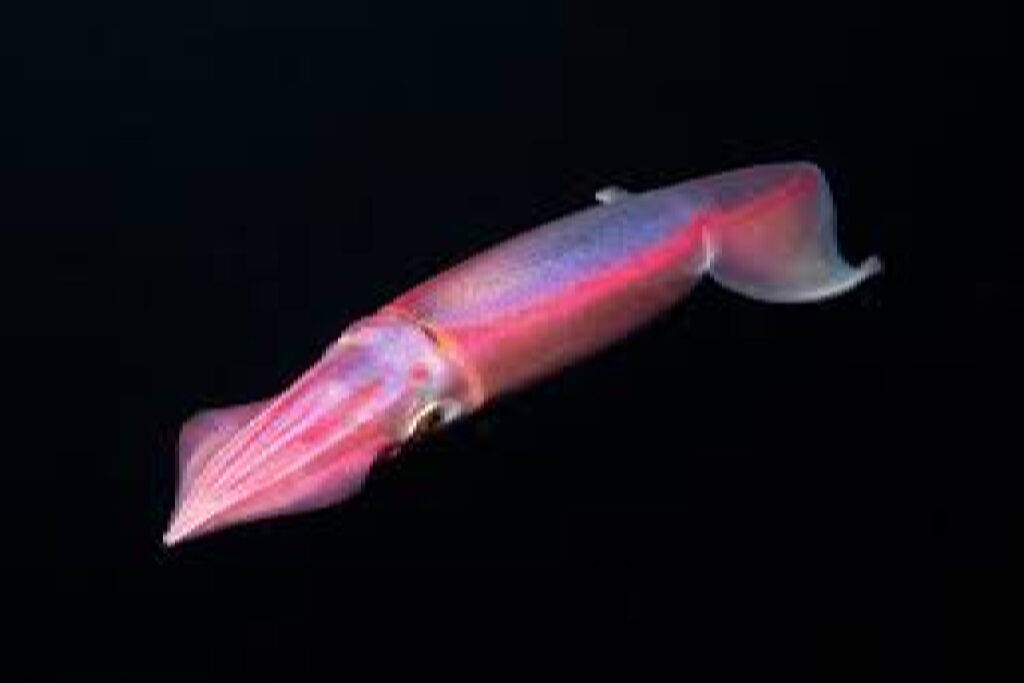
Diet and Predators of Neon flying squid
Neon flying squid, also known as Ommastrephes bartramii, have a diverse diet and face numerous predators in their marine habitat.
These fascinating creatures are not only skilled hunters but also compete with other predators for similar food sources.
Preyed upon by larger fish such as tuna, swordfish, and sharks
Neon flying squid may be small in size, reaching lengths of about 12-15 inches (30-38 cm), but they are a favorite meal for larger fish species like tuna, swordfish, and sharks.
These apex predators rely on the abundant population of neon flying squid as a vital food source.
With their agility and speed, these larger fish can easily catch the squid during their hunting expeditions.
Competes with other predators for similar food sources in their habitat
In addition to being hunted by larger fish, neon flying squid also face competition from other predators within their marine ecosystem.
These include various species of birds like seagulls and albatrosses that snatch them up from the water’s surface.
Other marine animals such as dolphins and seals also compete for the same prey items as the neon flying squid.
Consumes a significant amount of zooplankton as part of its diet
While neon flying squid are often preyed upon by larger fish, they themselves have an important role as predators in their ecosystem.
They consume a significant amount of zooplankton as part of their diet.
Zooplankton consists of tiny organisms such as krill and small crustaceans that float near the ocean’s surface.
The neon flying squid uses its sharp beak-like mouthparts to capture these planktonic organisms efficiently.
To survive and thrive in their environment, neon flying squid exhibit remarkable feeding strategies.
They have specialized tentacles equipped with suction cups that allow them to seize prey quickly. Their large eyes help them locate prey in dimly lit waters.
And they can even change the color of their skin to blend in with their surroundings, making them less visible to potential predators.
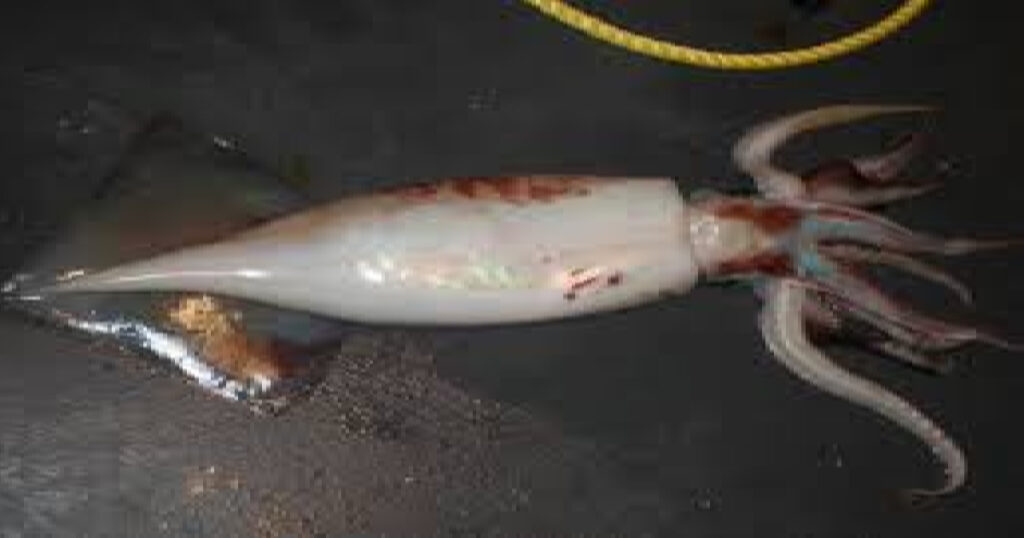
Life Cycle, Habits, and Lifestyle of Neon flying squid
The neon flying squid is a fascinating creature with an intriguing life cycle and unique habits. Let’s explore the different aspects of its life, from growth to migration and behavior.
Rapid Growth During Early Stages of Life
Neon flying squids exhibit rapid growth during their early stages of life. After hatching from eggs, these tiny squids grow quickly by feeding on plankton and small fish.
Their bodies undergo remarkable changes as they develop into adult squids. This rapid growth allows them to reach maturity in a short period.
Long-Distance Migration in Search of Breeding Grounds
One of the most remarkable features of neon flying squids is their long-distance migration. These bioluminescent species undertake extensive journeys in search of suitable breeding grounds.
They travel across vast stretches of the ocean, navigating through various currents and temperatures to find the ideal environment for reproduction.
During this migration, neon flying squids encounter different marine ecosystems and adapt accordingly.
They are known to follow specific routes that provide favorable conditions for breeding.
This remarkable ability to navigate over long distances showcases their resilience and survival instincts.
Schooling Behavior for Increased Survival Chances
Neon flying squids display schooling behavior as a means to increase their chances of survival. By forming large groups or schools, they can confuse predators and reduce individual vulnerability.
This collective behavior offers protection against larger predators such as dolphins or birds that might prey on them.
Schooling also provides other advantages for neon flying squids.
It enhances communication within the group, allowing them to coordinate movements effectively and respond swiftly to potential threats or opportunities for food.
Furthermore, being part of a school increases their access to potential mates during the breeding season.
Short Lifespan Ranging from 6 Months to 1 Year
Despite their impressive abilities and adaptations, neon flying squids have relatively short lifespans. On average, they live for about 6 months to 1 year.
This limited lifespan is partly due to the energy-intensive nature of their rapid growth and migration.
The short lifespan of neon flying squids highlights the importance of maximizing their reproductive efforts within this limited time frame.
It also emphasizes the need for efficient breeding strategies and successful migration patterns to ensure the survival of future generations.
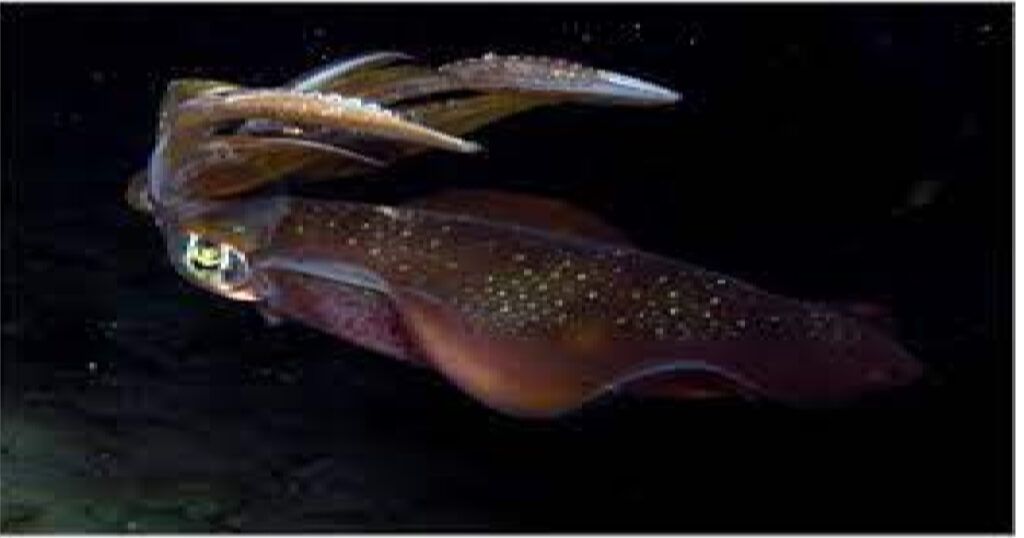
Distribution and Habitat of Neon Flying Squid
Neon flying squid, also known as Ommastrephes bartramii, can be found primarily in the Pacific Ocean but have also been observed in other regions.
These fascinating oceanic organisms prefer tropical and subtropical waters due to the higher availability of food.
However, they have been known to venture into temperate waters and even subarctic regions.
The distribution of neon flying squid is influenced by various factors such as water temperature, currents, and prey availability.
They are commonly found in the Pacific Ocean because it provides an ideal environment for their survival.
The warm waters and abundance of food sources make it a perfect habitat for these cephalopods. Neon flying squid can be found at varying depths depending on environmental conditions.
They have been observed at depths ranging from surface waters to several hundred meters below the surface.
This adaptability allows them to navigate through different layers of the ocean in search of their preferred prey.
During spawning seasons, neon flying squid are often seen near coastal areas. These periods usually occur when water temperatures are favorable for reproduction.
Coastal areas provide suitable conditions for egg deposition and ensure the survival of their offspring.
Although neon flying squid predominantly inhabit the Pacific Ocean, they have been documented in other regions as well.
Some examples include sightings off the coast of California, Hawaii, Japan, and Southeast Asia.
These sightings demonstrate their ability to adapt to different environments and explore beyond their usual range.
Mating Behavior and Reproduction of Neon flying squid
The mating behavior and reproduction of the neon flying squid are fascinating to observe.
These cephalopods engage in mass spawning events, where thousands of individuals release their eggs and sperm into the water.
This ensures a higher chance of successful fertilization.
Engages in mass spawning events
During these mass spawning events, female squid produce numerous small eggs. By releasing a large number of eggs, they increase the chances of survival for their offspring.
This strategy is known as “spawning.” The neon flying squid belongs to the family Ommastrephidae, which is characterized by its intermittent spawning behavior.
Females produce numerous small eggs
The females have evolved to produce multiple small eggs instead of fewer larger ones. This reproductive strategy allows for a higher number of offspring but at a smaller size.
By producing smaller eggs, the female squid can maximize the resources available for each individual offspring.
Males compete for mating opportunities
Mating among neon flying squids involves intense competition among males for mating opportunities with females.
The males display aggressive behaviors towards each other to establish dominance and secure their chances of reproducing successfully.
After hatching, larvae undergo a pelagic phase
Once the eggs hatch, the larvae enter a pelagic phase where they drift in open water. During this stage, they develop and grow before settling in suitable habitats as juveniles or adults.
This pelagic phase allows them to disperse over larger areas before finding their ideal environment.
The neon flying squid’s mating behavior is also influenced by its instinctive response to environmental cues such as light patterns and temperature changes.
These cues trigger specific movement patterns that lead them towards potential mates or suitable spawning grounds.
While we understand some aspects of their reproductive behaviors.
There is still much research needed to uncover the exact mechanisms behind these fascinating processes in neon flying squids.

Conclusion
In conclusion, the completed sections have provided valuable insights into the fascinating world of Neon Flying Squid.
We have explored various aspects of their lives, including their diet, habitat, conservation efforts, predators, life cycle, distribution, and mating behavior.
By delving into these topics, we have gained a comprehensive understanding of this unique species.
Understanding the diet and habitat of Neon Flying Squid is crucial for their conservation and management.
These cephalopods feed primarily on small fish and planktonic organisms found in the open ocean.
Their ability to fly above the water surface has allowed them to expand their range and adapt to different environments.
Conservation efforts are essential to ensure the preservation of their habitats and protect them from potential threats such as overfishing or pollution.
With a better understanding of their life cycle, habits, and lifestyle, scientists can develop effective strategies for managing Neon Flying Squid populations sustainably.
By studying their distribution patterns and mating behavior.
Researchers can gain insights into how these creatures navigate vast oceanic territories and ensure successful reproduction.
To learn more about these captivating creatures or contribute to ongoing research efforts. Visit our website or reach out to marine biology organizations dedicated to studying neon flying squid.
FAQs
1. What is the average lifespan of a Neon Flying Squid?
Neon Flying Squids typically have a lifespan of around one year. However, some individuals may live slightly longer depending on environmental conditions and genetic factors.
2.Are Neon Flying Squids endangered?
Currently, there is no evidence suggesting that Neon Flying Squids are endangered. However, it is important to monitor their populations closely due to potential threats such as overfishing or habitat degradation.
3. How do Neon Flying Squids fly?
Neon Flying Squids possess specialized fins called “wings” that allow them to glide above the water’s surface for short distances. This unique adaptation helps them escape predators and search for food efficiently.
4. Can Neon Flying Squids change their color?
Yes, Neon Flying Squids have the remarkable ability to change their color and patterns. They use this skill for communication, camouflage, and hunting purposes.
5. Do Neon Flying Squids migrate?
Yes, Neon Flying Squids are known to undertake seasonal migrations in search of suitable feeding grounds and breeding sites. These migrations can span hundreds or even thousands of kilometers.


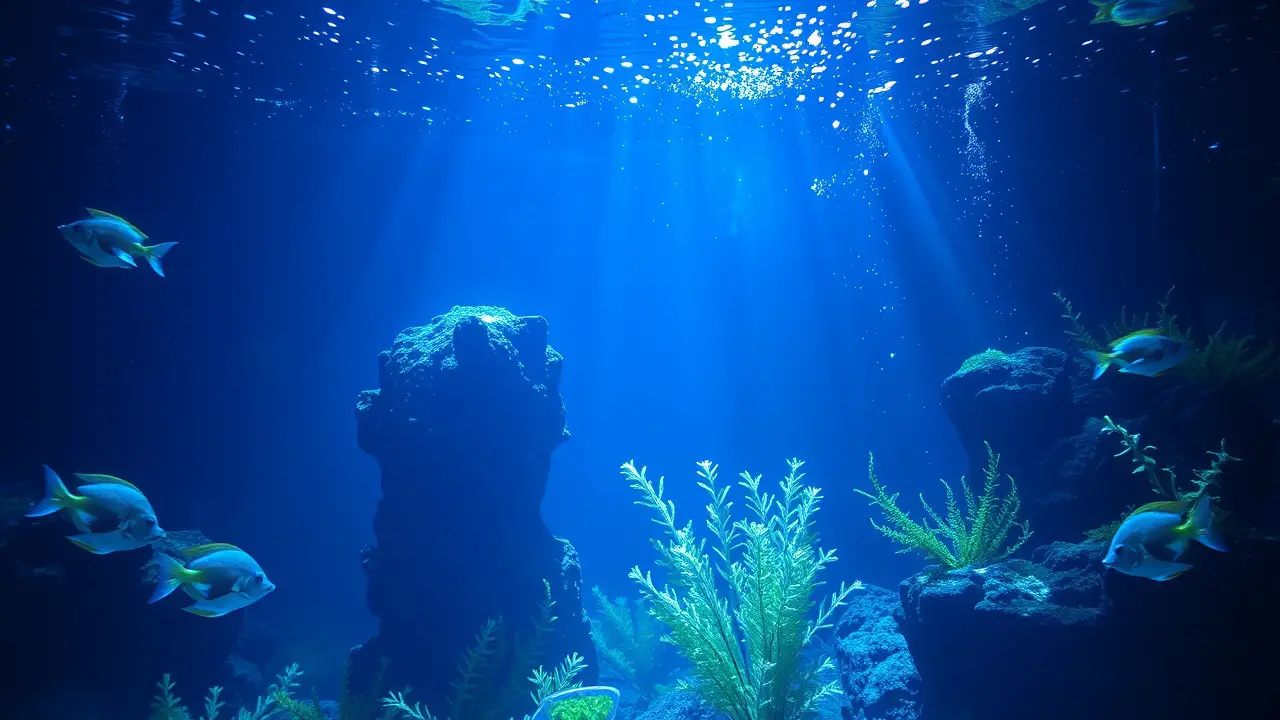
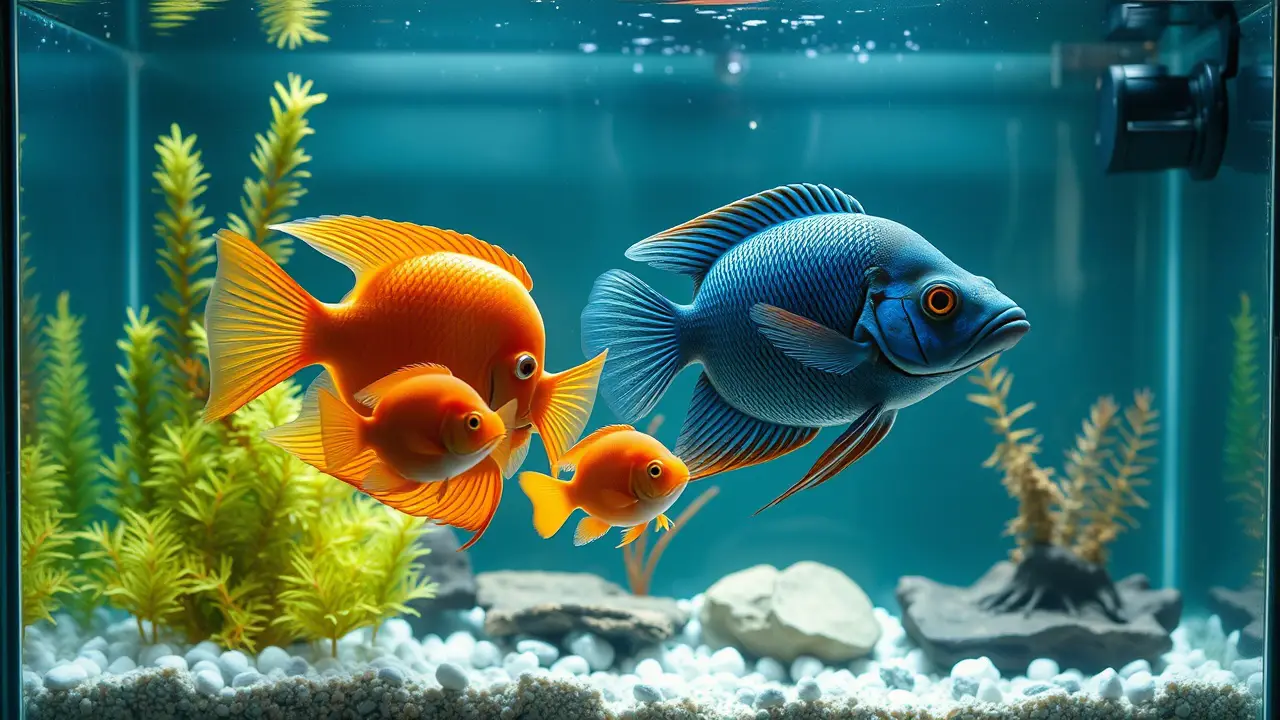
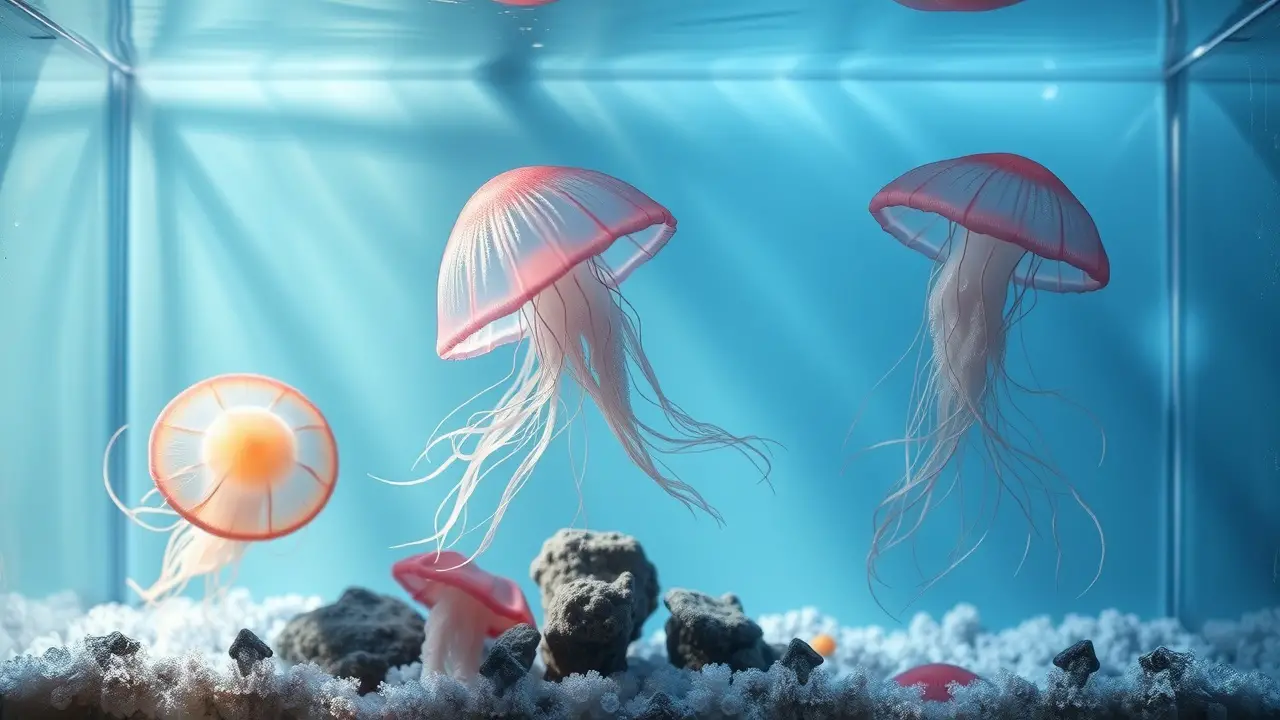
Leave a Reply